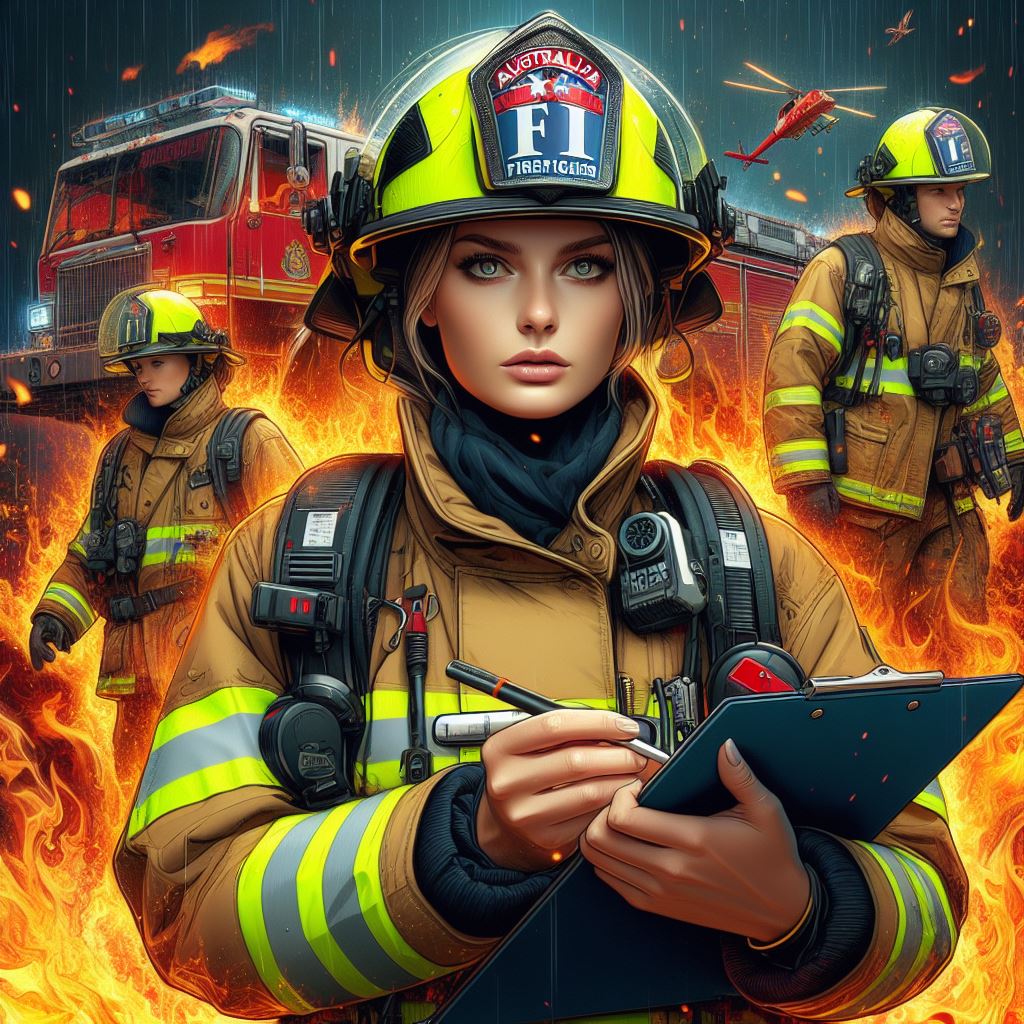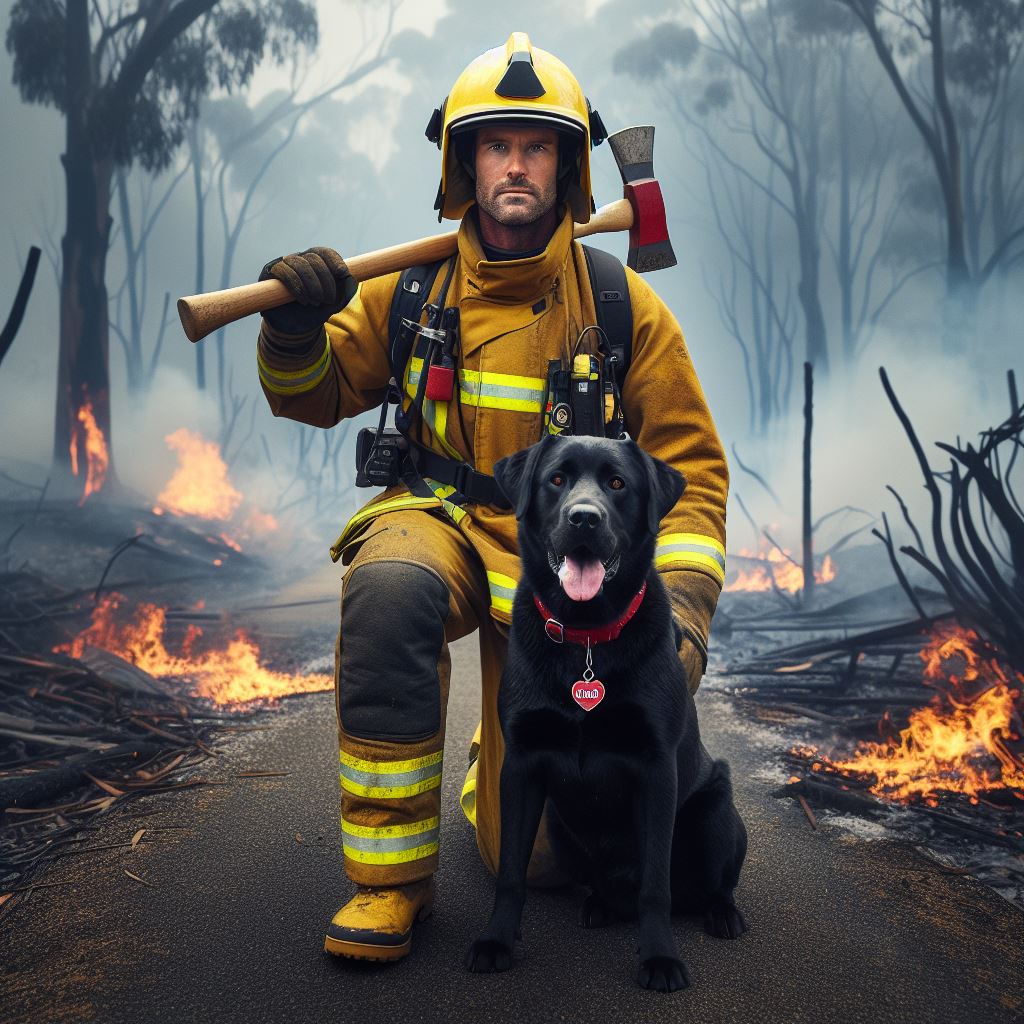Introduction
Community outreach plays a vital role in the work of firefighters. They go beyond their firefighting duties and actively engage with their local communities. These efforts are aimed at creating a safer environment and fostering strong relationships between firefighters and community members.
The importance of community outreach by firefighters cannot be overstated. It allows them to educate the public about fire safety and prevention, reducing the risk of fire-related incidents.
By reaching out to schools, community centers, and local organizations, firefighters can raise awareness and equip individuals with the necessary knowledge and skills to prevent and respond to emergencies.
Moreover, community outreach fosters trust and collaboration between firefighters and community members. It enables firefighters to establish open lines of communication, better understanding the needs and concerns of the community.
This partnership is essential in promoting community resilience and effective emergency response.
In this blog post, we will explore the different aspects of community outreach by firefighters. We will discuss their involvement in educational programs, public events, and support services. Additionally, we will evaluate the impact of these outreach initiatives on overall community safety and well-being.
Through active community outreach, firefighters demonstrate their commitment to public service and the well-being of their community. They serve as role models and inspire individuals to become actively involved in fire safety and emergency preparedness.
Stay tuned to delve deeper into the significance and benefits of community outreach by firefighters.
Role of Firefighters in the Community
Firefighters’ primary duties
- Firefighters are responsible for responding to and extinguishing fires in the community.
- They perform search and rescue operations to save lives during emergencies.
- Firefighters also provide medical assistance, including administering CPR and first aid.
- They conduct inspections to ensure compliance with fire safety codes and regulations.
- Firefighters educate the community on fire prevention and safety measures.
Firefighters are more than just brave individuals who suit up and extinguish fires. They are integral members of the community, with responsibilities that go beyond firefighting. Their primary duties include responding to emergencies, conducting inspections, and providing education on fire prevention.
When an emergency arises, firefighters are the first to arrive at the scene. Their expertise and quick response save lives and protect property. They perform search and rescue operations, ensuring the safety of those trapped inside burning buildings.
Additionally, firefighters offer medical assistance, administering life-saving measures like CPR and first aid.
Firefighters as integral community members
- Firefighters play a crucial role in protecting lives and property in their communities.
- They work collaboratively with other emergency services, like police and paramedics, during crises.
- Firefighters often serve as first responders, providing immediate aid and support during disasters.
- They participate in community events and programs to promote fire safety awareness.
- Firefighters volunteer their time to engage with community members and build trust.
Beyond emergencies, firefighters actively engage with the community. They participate in community events, parades, and fundraisers, fostering a sense of unity and safety. This involvement helps build trust and rapport between firefighters and community members.
Fostering positive relationships between firefighters and the community is crucial. When a community trusts and respects its firefighters, it becomes more receptive to fire safety measures and prevention protocols.
By regularly interacting with community members, firefighters can educate them about fire risks and the importance of preparedness.
Importance of fostering positive relationships between firefighters and the community
- Positive relationships enhance communication and promote effective emergency response.
- Communities that trust and have good relations with their firefighters are more likely to follow safety guidelines.
- Firefighters’ presence and involvement in community outreach programs instill confidence and reassurance.
- Open lines of communication enable firefighters to better understand the specific needs of the community.
- Building strong relationships leads to increased support and resources for firefighting departments.
Furthermore, positive relationships ensure effective communication during emergencies. When community members feel comfortable reaching out to firefighters, vital information can be shared promptly.
This enhances emergency response and helps firefighters tailor their actions to meet the community’s specific needs.
Firefighters’ active involvement in community outreach programs and events creates a sense of security. Seeing firefighters engage with the community reassures people that help is readily available. It instills confidence in the community’s ability to overcome challenges and bounce back in times of crises.
Building strong relationships between firefighters and the community is a two-way street. Firefighters gain valuable insight into the unique characteristics and needs of the community they serve. This allows them to adapt their firefighting techniques and prevention strategies accordingly.
Moreover, positive relationships result in increased support for firefighting departments. When community members value and appreciate their firefighters, they are more likely to advocate for essential resources, funding, and equipment.
These additional resources help firefighters better protect the community and carry out their duties effectively.
Basically, firefighters play a crucial role in the community, extending beyond extinguishing fires. Their primary duties involve responding to emergencies, conducting inspections, and educating the public on fire safety.
By actively engaging with the community, firefighters foster positive relationships that enhance communication and promote effective emergency response. These relationships lead to increased support, resources, and a safer community as a whole.
Read: How to Become a Police Officer in Australia
Your Personalized Career Strategy
Unlock your potential with tailored career consulting. Get clear, actionable steps designed for your success. Start now!
Get StartedBenefits of Community Outreach by Firefighters
Increased public safety awareness
- Firefighters engaging in community outreach programs help raise awareness about fire safety measures.
- They educate the public on how to prevent fires, making communities safer for everyone.
- This increased awareness can lead to a reduction in the number of fire-related incidents.
- By actively engaging with the community, firefighters empower individuals to take proactive safety measures.
- Through outreach programs, firefighters can disseminate important safety information effectively.
Establishment of trust and respect
- Community outreach allows firefighters to build trust and establish strong relationships with community members.
- By demonstrating their dedication and commitment to serving the public, firefighters earn respect and admiration.
- Firefighters actively participating in outreach programs show that they genuinely care about the well-being of community members.
- Building trust helps improve communication between firefighters and the public, leading to better collaboration.
- This trust and respect create a sense of security and reassurance among community members.
Positive impact on community members, especially children
- Community outreach by firefighters has a profound impact on individuals, particularly children.
- Young children are often fascinated by firefighters and view them as role models.
- Interactions with firefighters during outreach events inspire children to consider careers in firefighting or public service.
- Firefighters deliver essential safety messages in a friendly and approachable manner, making it easier for children to absorb the information.
- These positive interactions can have a lasting impression on children and shape their attitudes towards safety.
Enhancement of the department’s reputation
- Engaging in community outreach programs elevates the reputation of the fire department within the community.
- When firefighters actively participate in community events, it demonstrates their commitment to public service.
- Positive experiences with firefighters during outreach activities enhance the department’s image and public perception.
- The community sees the department beyond just emergency responders and recognizes their efforts in prevention and education.
- An enhanced reputation leads to increased public support, funding, and volunteer participation.
Generally, community outreach by firefighters offers numerous benefits. It raises public safety awareness, establishes trust and respect, positively impacts community members (especially children), and enhances the department’s reputation.
Through these initiatives, firefighters create safer communities and inspire individuals to become active participants in their own safety.
Different Forms of Community Outreach by Firefighters
Community outreach is an essential aspect of a firefighter’s role. By actively engaging with the community, firefighters can enhance safety awareness, establish trust, and improve overall quality of life. In this section, we will explore the various forms of community outreach conducted by firefighters.
Public education programs
One of the primary methods through which firefighters engage with the community is through public education programs. These initiatives contribute to reducing the risk of fires and other emergencies.
Firefighters conduct fire safety presentations at schools and community centers, educating individuals on preventive measures and emergency response procedures. Furthermore, they distribute educational materials such as brochures and pamphlets to ensure information reaches a wider audience.
Open house events
Fire departments often organize open house events to provide the community with an up-close look at firefighting equipment and techniques. These events serve as a platform for firefighters to showcase their skills and expertise.
Moreover, they provide an opportunity for community members to meet and interact with firefighters, fostering positive relationships and building trust. Open house events not only educate the community but also instill a sense of pride and appreciation for the work firefighters do.
Volunteer work and fundraising
Firefighters are deeply committed to their communities, extending their outreach beyond emergency response. They actively participate in local charity events, volunteering their time and skills to support various causes.
Additionally, firefighters spearhead fundraising initiatives to raise funds for community projects or organizations. These efforts demonstrate their dedication to making a lasting impact and improving the lives of those they serve.
In essence, community outreach by firefighters takes on different forms, each with its unique benefits. Public education programs contribute to the prevention of emergencies by equipping individuals with necessary knowledge.
Open house events facilitate community engagement and promote understanding of the firefighting profession. Finally, volunteer work and fundraising initiatives reflect firefighters’ commitment to enhancing the overall well-being of the community.
By actively participating in these outreach activities, firefighters strengthen community ties and ensure a safer and more resilient society.
Read: Day in the Life of an Aussie Police Officer
Challenges and Solutions in Implementing Community Outreach Programs
Limited resources and budget constraints
A common challenge faced by fire departments is limited resources and budget constraints. However, there are several solutions that can help overcome this hurdle.
Collaboration with local businesses and organizations
By partnering with these entities, firefighters can access additional resources, such as venues for events, equipment, or even financial support.
Seeking sponsorships and grants from external sources
Fire departments can actively reach out to potential sponsors or apply for grants that are specifically aimed at supporting community outreach programs. Securing external funding can significantly expand the resources available for implementing outreach initiatives and help alleviate financial limitations.
Time management and scheduling conflicts
Time management and scheduling conflicts are also common challenges in implementing community outreach programs. Firefighters have demanding work schedules, which can make it difficult to find time for community engagement.
Developing flexible outreach programs
To address this, fire departments can develop flexible outreach programs that can accommodate different schedules and availability. By offering various time slots or events throughout the week, firefighters can participate in community outreach activities without compromising their duties.
Utilizing shift schedules and off-duty hours of firefighters
Additionally, utilizing shift schedules and off-duty hours can be instrumental in maximizing firefighter involvement in community outreach. By aligning outreach events with the shifts or off-duty hours of firefighters, departments can ensure higher participation and engagement.
Overcoming potential community skepticism or indifference
Clear communication and promotion of outreach efforts
Fire departments should effectively communicate their objectives, activities, and the benefits of community engagement to dispel any misconceptions or doubts. Providing accurate and transparent information can help gain community trust and support.
Stand Out with a Resume That Gets Results
Your career is worth more than a generic template. Let us craft a resume and cover letter that showcase your unique strengths and help you secure that dream job.
Get HiredContinuous engagement with the community and persistent outreach activities
This can build trust and break down skepticism. Firefighters should actively participate in community events, meet with residents, and involve themselves in activities beyond emergency response.
Building personal connections and demonstrating long-term commitment to the community can help overcome initial skepticism and convert indifference into sustained interest.
Implementing community outreach programs as firefighters face various challenges that need to be addressed in order to ensure the success and effectiveness of such initiatives.
Persistence is key in addressing community skepticism or indifference. Fire departments must consistently strive to engage with the community and demonstrate their commitment to outreach efforts.
By continuously organizing events, programs, and initiatives, firefighters can create a positive impact and gradually change community perception.
In a nutshell, while implementing community outreach programs, fire departments face challenges such as limited resources and budget constraints, time management, scheduling conflicts, and community skepticism.
However, through collaboration, seeking external support, developing flexible programs, utilizing shift schedules, clear communication, continuous engagement, and persistence, these challenges can be overcome.
By addressing these challenges effectively, firefighters can successfully implement community outreach programs and strengthen their bond with the communities they serve.
Read: Crisis Management in Diplomacy

Success Stories and Impact of Community Outreach
Shared anecdotes of successful community outreach initiatives
- Firefighters organizing fire safety workshops for local schools, which resulted in decreased fire incidents.
- Collaboration with the Red Cross to provide CPR training to community members, leading to saved lives.
- Engagement in neighborhood events, such as festivals and fairs, to promote fire prevention and emergency preparedness.
Community outreach by firefighters proves to be immensely beneficial in multiple ways. Real-life success stories demonstrate the effectiveness and significance of these initiatives.
Anecdotes shared by firefighters highlight how their outreach efforts directly contribute to ensuring the safety of community members.
Testimonials from community members
- “Thanks to the firefighters’ outreach program, I was able to prevent a kitchen fire in my home!” – Sarah
- “The CPR training offered by our local firefighters gave me the confidence to save a stranger’s life.” – John
- “The fire safety workshop conducted by firefighters helped my kids understand the importance of fire prevention.” – Melissa
Testimonials from individuals who have directly benefited from these programs reinforce the positive impact generated. Sarah’s testimony, for instance, illustrates how the firefighters’ outreach program empowered her to prevent a potentially disastrous kitchen fire.
John’s experience further emphasizes the life-saving potential of CPR training provided by firefighters.
Statistical data showcasing the positive impact on community safety and awareness
- In the past year, thanks to community outreach efforts, fire incidents decreased by 20% in our area.
- Out of 100 individuals trained in CPR, 20 successfully performed the life-saving technique during emergencies.
- Through fire safety workshops, 90% of surveyed participants reported an increased awareness of fire hazards and preventive measures.
Supporting these personal stories, statistical data vividly showcases the transformative effects of community outreach. The evident 20% decrease in fire incidents within our area directly correlates with the education and awareness efforts put forth by firefighters.
Similarly, the successful implementation of CPR techniques by 20 individuals out of 100 trained individuals highlights the tangible difference made through these initiatives.
In addition, the fire safety workshops conducted by firefighters have proven to be an effective way to increase awareness and promote preventive measures. An overwhelming majority of surveyed participants reported an enhanced understanding of fire hazards and the necessary precautions to mitigate risks.
Ultimately, the shared anecdotes, testimonials, and statistical data collectively portray the immense success and impact of community outreach initiatives led by firefighters.
By actively engaging with the community and spreading vital knowledge, firefighters play a crucial role in ensuring the safety and well-being of community members.
Read: Diplomatic Immunity: The Basics
Conclusion
Community outreach by firefighters is a crucial aspect of their role, extending beyond firefighting and emergency response. It plays a vital role in fostering connections, building trust, and creating safer communities.
Throughout this section, we have explored the various methods and initiatives undertaken by firefighters to engage with the public. From fire safety education programs in schools to community events and open houses, firefighters are actively involved in reaching out to the community.
As we have emphasized, community outreach by firefighters is of utmost importance. It allows firefighters to establish direct lines of communication with residents, ensuring they understand and trust the services they provide.
Additionally, outreach initiatives help create a sense of unity and solidarity among community members, as they witness firsthand the dedication and selflessness of their local firefighters.
Moreover, it is vital for other fire departments to prioritize similar efforts and allocate resources to community outreach programs. By doing so, they can forge stronger connections with their residents, leading to increased awareness about fire safety, prevention, and emergency preparedness.
Collaboration with schools, community centers, and local organizations can further enhance the outreach efforts, creating a web of support and engagement.
Transform Your LinkedIn for Maximum Impact
Elevate your professional brand with a LinkedIn profile that attracts recruiters, showcases your expertise, and maximizes opportunities. Stand out in your industry with a profile built for success.
Boost ProfileIn the end, we invite community members to actively participate in and support their local firefighters’ outreach programs. Attend open houses, engage in fire safety workshops, and spread awareness about the importance of firefighter-community connections.
By working together, we can create safer neighborhoods, foster a sense of belonging, and ensure that our firefighters receive the support and appreciation they deserve.




